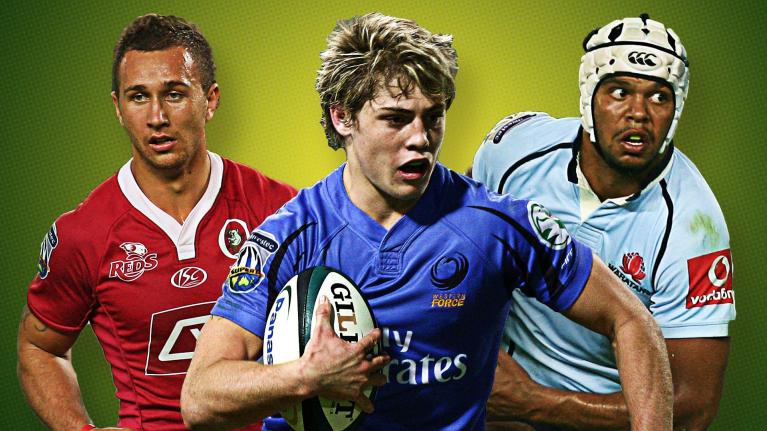Where is Australia's next generational talent?

The longest drought in Australian rugby, a 35-game winless streak against New Zealand opposition has led to many questions surrounding the state of the game in Australia.
Prior to the Reds match against the Chiefs, Queensland prop James Slipper was asked how this had happened.
“It’s a good question and I’m sure if we knew the answer earlier we would have rectified it,” Slipper said.
“There’s a bit of a gap between the Aussie and Kiwi teams but I believe we are clawing it back with hard work.”
When pressed to explain the difference James Slipper explained that New Zealand has opened the gap by “staying up with trends in play, (superior) skill execution and how they have been coached.”
“And, honestly, it’s always down to the basics that the Kiwis do well and we are working on...catch-pass, tackling, set piece, running hard and winning collisions,” Slipper said.
Whilst those are all valid and accurate points, it could be argued these are all merely symptoms of a game losing its relevance in the Australian sporting landscape. With four professional football codes – Aussie Rules, Rugby League, Football and Rugby Union, Rugby Australia has lost countless battles to keep the game at the forefront of the market.
At the same time across the ditch, the rise of professionalism in rugby has led to a turbo-charged production line in New Zealand from schoolboys through to Super Rugby. Throughout the early 2000’s the game was relatively early in its days as a professional game and as such a large proportion of schoolboy teams were still the ‘two trainings a week’ type with limited to no strength and conditioning.
By the end of the decade, the 1st XV schoolboy competition had become intensified nationally, with vast amounts of money being invested by schools in semi-professional rugby programmes. As the national code, upwards of a 100 schools dedicated serious resources to the game.
With a time lag of roughly 4 years between ending school and making it to Super Rugby, those graduating from 2008-2010 would hit the pros around 2012-2014. This new generation has been training like professionals since they were 15 and playing upwards of 30-40 competitive games a year, not just against local competition but the best of the best nationally.
Meanwhile, the game in Australia has always been held within insular associations of private schools in the states of New South Wales and Queensland. The strongest and most prominent are the GPS associations of around nine member schools in both states, who play within each association. In Queensland, they play each other competitively eight times in a year.
With New Zealand’s best talent playing at least four times more than that, for every one year of skill development for an Australian player the Kiwi player is effectively getting three or four. Fast forward to the time they play professionally and that’s a big difference in learned skill and experience. We are seeing that play out every time a New Zealand side plays an Australian side despite Kiwi sides getting younger and Australia hanging on to players of yesteryear.
This is not the fault of the GPS schools, without them the game would be officially dead. Rather, Rugby Australia has failed to align with them, increase the number of games they are playing, and find a way to foster competition on a national level that benefits the development of the players. At this stage, the chasm is so wide the point of no return has been reached.
Australian sides will eventually beat a Kiwi side, but even a stopped clock is right twice a day. Once every twenty or thirty matches is no competition. There is no stopping the avalanche of points coming every time New Zealand sides play Australian sides until there is a structural change from the bottom up.
Australia got left behind and it might be too late to do anything about it.
Latest Comments
All because of Ireland’s reckless & dangerous ruck clear out tactics. It's obviously part of their training, unf..king believable
Wishing AD a speedy recovery
Go to commentsI fell victim to a sophisticated cryptocurrency scam, losing $128,000.00 USDT to a fake trading platform. The scammers had promised a 10% daily profit, but instead, they left me financially ruined and struggling to pay my bills. Desperate for a solution, I confided in a close friend who introduced me to MORPHOHACK CYBER SERVICE, a team of experts specializing in cryptocurrency recovery. Their cutting-edge software and advanced techniques proved to be the game-changers I needed.
If you're in a similar situation, don't hesitate to reach out to MORPHOHACK CYBER SERVICE at (Morphohack@cyberservices.com)
Their team is dedicated to helping victims of cryptocurrency scams recover their stolen funds.
MORPHOHACK CYBER SERVICE employed a multi-faceted approach to recover my stolen digital assets. Their team utilized:
• Advanced tracking software to identify the scammers' digital footprints
• Sophisticated algorithms to trace the flow of my stolen funds
• Expert analysis to uncover the scammers' tactics and vulnerabilities
Within an impressive 72-hour timeframe, MORPHOHACK CYBER SERVICE successfully investigated, tracked down the scammers, and recovered my stolen funds. Their prompt and professional service gave me hope in a desperate situation.
If you've fallen victim to a similar cryptocurrency scam, I strongly recommend reaching out to MORPHOHACK CYBER SERVICE. Their expertise and advanced techniques can help you recover your stolen funds and avoid further financial losses.
Go to comments